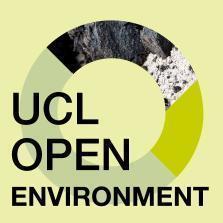- Record: found
- Abstract: found
- Article: found
Invited discussant comments during the UCL-Penn Global COVID Study webinar ‘Alone Together: Loneliness Research and Social Health Innovation in Lockdown and Beyond’
discussion

03 November 2022
2022
There is no author summary for this article yet. Authors can add summaries to their articles on ScienceOpen to make them more accessible to a non-specialist audience.
Abstract
The coronavirus (Covid-19) pandemic has influenced people’s social relationships around the world in surprising ways. It has also underscored the importance of and accelerated innovation in solutions for social isolation and loneliness. This commentary offers takeaways from emerging research findings and a wide lens on the societal movement underway to create more socially connected communities.
Related collections
Most cited references14
- Record: found
- Abstract: found
- Article: not found
The trajectory of loneliness in response to COVID-19.
Martina Luchetti, Ji Hyun Lee, Damaris Aschwanden … (2020)

- Record: found
- Abstract: found
- Article: found
The social cure of social prescribing: a mixed-methods study on the benefits of social connectedness on quality and effectiveness of care provision
- Record: found
- Abstract: found
- Article: found
Did Social Connection Decline During the First Wave of COVID-19?: The Role of Extraversion
Author and article information
Comments
Comment on this article
scite_
0
0
0
0
 Smart Citations
Smart Citations0
0
0
0
Citing PublicationsSupportingMentioningContrasting
See how this article has been cited at scite.ai
scite shows how a scientific paper has been cited by providing the context of the citation, a classification describing whether it supports, mentions, or contrasts the cited claim, and a label indicating in which section the citation was made.